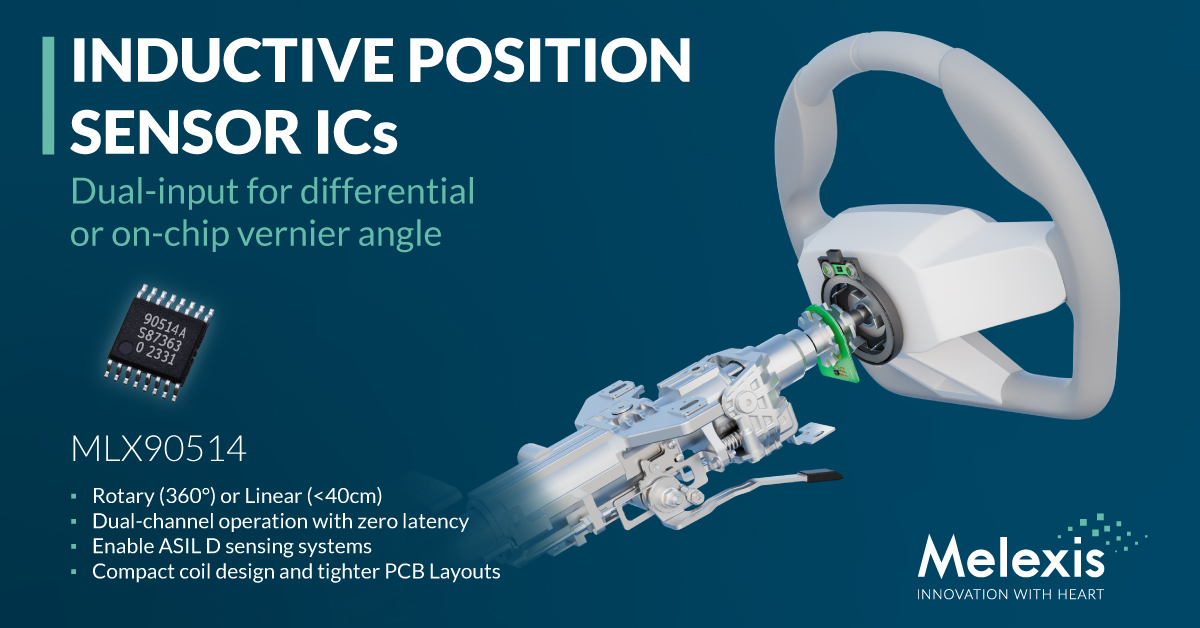Melexis has unveiled the MLX90514, a groundbreaking dual-input inductive sensor IC that simultaneously reads signals from two sets of coils, enabling on-chip computation of differential and vernier angles. This innovation is poised to simplify design and enhance performance in advanced automotive applications like steer-by-wire, torque feedback, and precision angle sensing.

Designed for the Future of Automotive Control
As vehicles evolve toward electrification, autonomy, and advanced driver-assistance systems (ADAS), the complexity of control systems—especially steering mechanisms—has surged. Traditional setups often rely on two single-channel ICs or magnetic sensors, which can increase cost, size, and integration challenges. The MLX90514 addresses these issues by offering:
- Dual-channel inductive sensing in a single IC
- On-chip differential and vernier angle calculations, reducing host processor load
- Compact and simplified sensor architecture, ideal for space-constrained environments
Technical Highlights
- Sensor Type: Inductive position sensor interface IC
- Inputs: Two independent coil sets
- Output: Differential or vernier angle measurements
- Target Applications:
- Steering torque feedback
- Steering angle sensing
- Steering rack motor control
- Steer-by-wire systems
This dual-input capability allows for redundant or differential measurements, improving safety and accuracy—critical in automotive systems where precision and reliability are paramount.
Smarter Integration, Lower Complexity
By integrating angle computation directly on-chip, the MLX90514 minimizes the need for external processing and reduces system latency. This not only streamlines the sensor design but also enhances responsiveness in dynamic driving scenarios.
Moreover, its inductive nature makes it immune to magnetic interference, a common challenge in traditional magnetic sensor setups. This robustness further supports its deployment in harsh automotive environments.
Melexis’ MLX90514 reflects a broader trend in sensor innovation—more data, less complexity. As OEMs and Tier 1 suppliers seek smarter, more integrated solutions, dual-input sensors like this one offer a compelling path forward. For engineers and system designers, the MLX90514 opens new possibilities in redundant sensing, miniaturization, and cost-effective performance—all crucial for next-generation vehicle platforms.o reduce data center carbon footprints while scaling compute capabilities.
Share to your social below!
